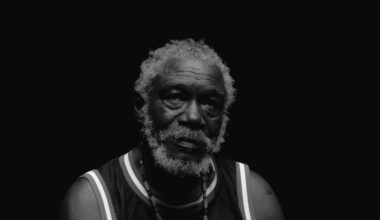Josefine was born in Hannover and educated as a soloist in the world-famous Mädchenchor Hannover. A variety of subjects and eras gives German-Chilean soprano Josefine Göhmann a stylistic range stretching from the late Renaissance through Mozart, Strauss, and Messiaen to contemporary music, forming the core of her artistic endeavour. In duo with pianist Mario Häring, Josefine Göhmann presents her debut album in co-production with German Radio Deutschlandfunk and Munich based label Solo Musica under the title “réBelles! portraits lyriques” on the topic of female empowerment and 100 years of the movement for women’s rights.
Josefine emerged as Poppea at Opéra National de Lyon, as Cefisa at Théâtre des Champs-Elysées Paris, Fille at Festival Printemps des Arts de Monte-Carlo.
FACTS
1. Women may be legally equal to men, yet the female entity and reality still endure with invisible stereotypes and limits in “permission”.
2. Domestic violence against women increased during the pandemic period.
3. Female fear is no hysteria per se: It is a historically grown system of protection.
QUESTIONS
1. What is the biggest inspiration for your music?
My unlimited interest in shapes of sound: To make the soul find expression in sound. All times, styles, and epochs have found their shape of sound. Music is an art attached to time and the moment of “now”. Yet, the architecture, depth and intensity of music can touch the soul´s deepest corner and can transform our now and future being. I resonate with a lot of different music from pop music to classical and avant-garde music. If it touches my heart and soul or my sense of moving to finally get to dance… to share my passion for this art, to take people to music, which is pure beauty for me and maybe make them feel what I feel for this music: that inspires me.
2. How and when did you get into making music?
As a little girl, Brahms Hungarian Dances were my favourite cassette, and I took it off the shelf myself to dance in the living room. When I was five, I wanted to learn to play the piano and wanted to become a pianist, but my piano teacher discovered that I was singing while playing the piano. As a nine-year-old girl, I was chosen in school and church to play and sing Maria for Christmas. Many people came to my mother to say “this girl has a beautiful voice!”. When I was 12, I was chosen to be educated as a soloist in my hometown`s world-famous Mädchenchor Hannover. Since then, I wanted to become an opera singer.
3. What are 5 of your favourite albums of all time?
Arturo Benedetti Michelangeli`s recording of Debussy’s Children’s Corner, Images I&II
Songs of Debussy & Chausson by soprano Christine Schäfer and pianist Irwin Gage
Speak Low, Kurt Weill Album of mezzo-soprano Anne Sofie von Otter, pianist Bengt Forsberg and John Eliot Gardiner
The White Album/The Beatles
A Camp by The Cardigans Nina Persson
4. What do you associate with Berlin?
A mirror of historic changes, a melting pot for artistic tendencies of the international “now”. Brandenburger Tor, Reichstag, Alex, Tiergarten, the miracle of different urban biotopes like Mitte, Charlottenburg, Neukölln, Moabit and Prenzlauer Berg. Roughness. Endless searching for a new “me” of everyone and a new door of experience. Restlessness.
5. What’s your favourite place in your town?
Villa Elisabeth, Elisabeth Church, and Garden in Mitte.
6. If there was no music in the world, what would you do instead?
I cannot imagine a world without music, even with visual art attached to my acoustic sensation. But the texture of cloth, clothing, jewellery, costumes, shoes, and bags fascinate me as well as architecture, furniture, paintings… Words… Poetry! Philosophy! Haha. I am an aesthetically obsessed person… Even without music.
7. What was the last record/music you bought?
A recording of Renée Fleming´s “Glück, das mir verblieb”, an aria from the opera “Die tote Stadt” by Erich Wolfgang Korngold. But while writing this interview down, I am listening to the voice of Karen Carpenter and enjoying the smooth vibes.
8. Who would you most like to collaborate with?
Quasi posthum with Pina Bausch. To work with the director Romeo Castellucci would be a dream come true.
9. What was your best gig (as performer or spectator)?
The title role of Monteverdi’s “L’incoronazione di Poppea” at Opéra du Château de Versailles in a staging by the legendary director Klaus-Michael Grüber; a production of Opéra National de Lyon. A sensual aesthetic exploration as a performer regarding singing, acting, statuesque yet elegant and improvised body movement towards dance…
10. How important is technology to your creative process?
In terms of artistic exploration, I am more of an analogue type of person. But when it comes to writing, I get more and more used to technical tools/devices. Regarding graphic design, I get more into Apps where I can do collages and digital painting…
11. Do you have siblings and how do they feel about your career/art?
I have three siblings. Two older and one younger sibling made up of two sisters and one brother. They admire and support my art and work, even though they are not that much into classical music or art. With my album reBELLES! portraits lyriques they became more fascinated with Lied and 20th-century music. That touches me and makes me very happy. Family matters to me.


